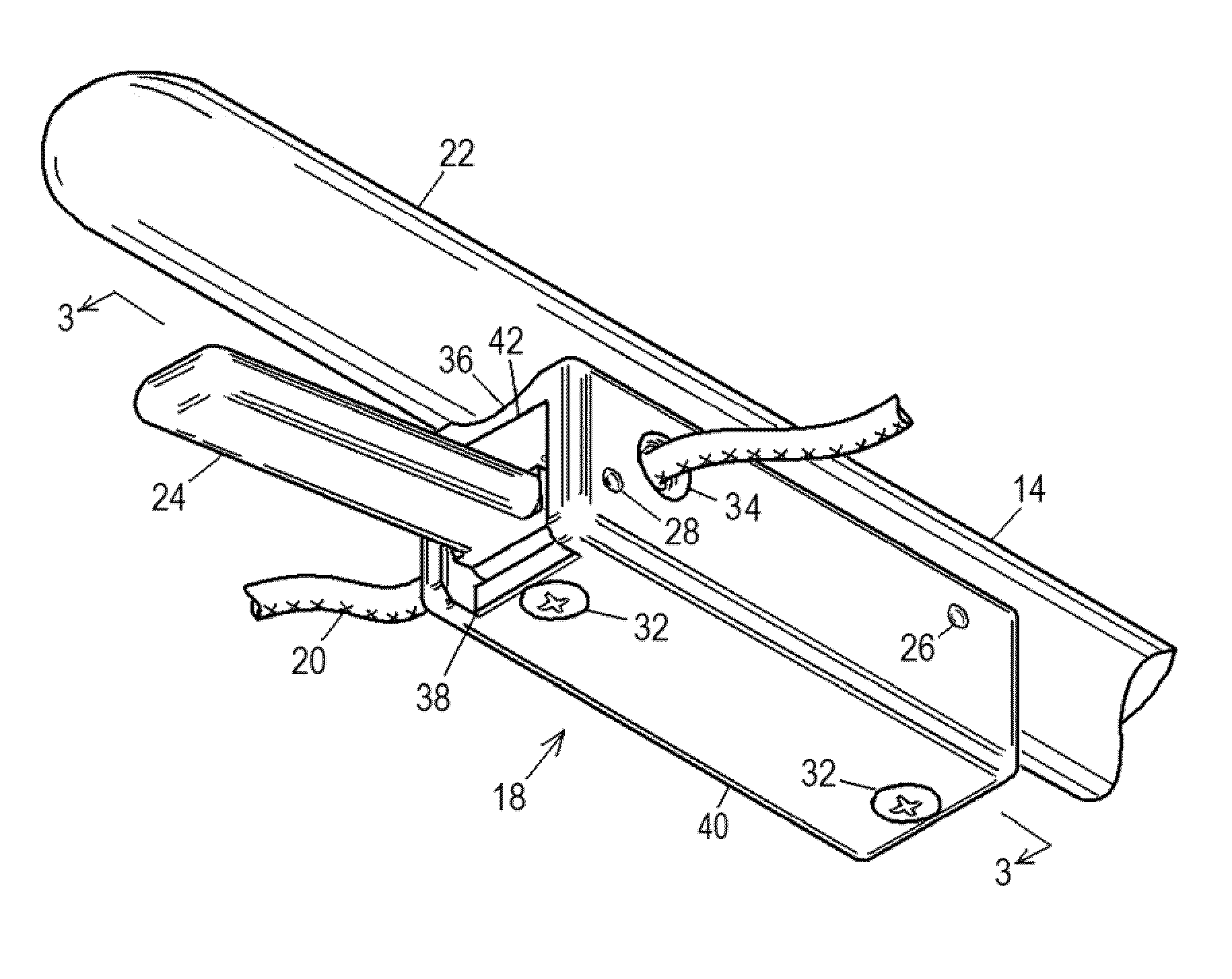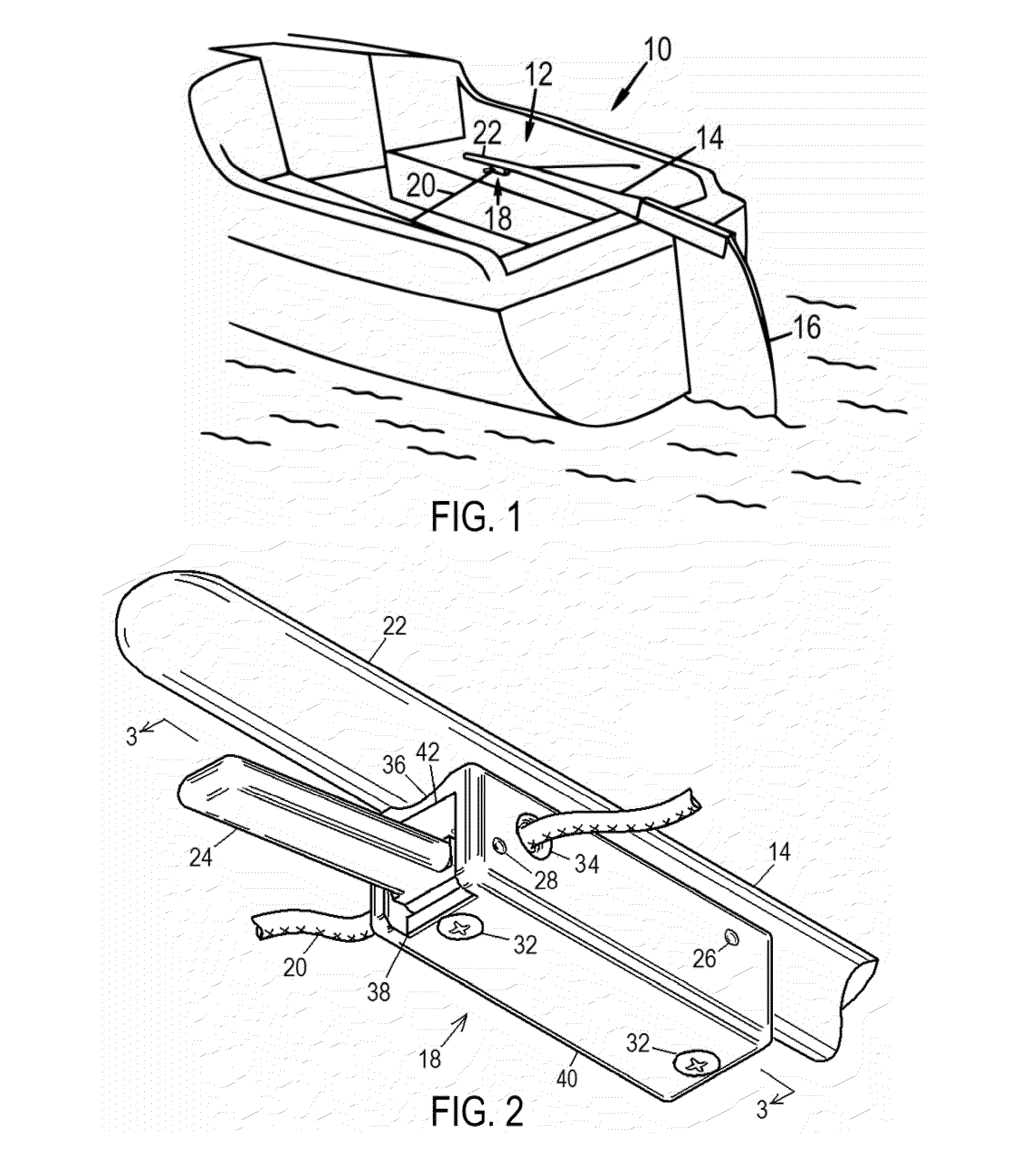Boat tiller restraining device
a technology of restraining device and tiller, which is applied in the direction of steering initiation, special purpose vessels, vessel construction, etc., can solve the problems of cumbersome use, inability to quickly or intuitively release when necessary, and the boat veering off course with undesirable effects,
- Summary
- Abstract
- Description
- Claims
- Application Information
AI Technical Summary
Benefits of technology
Problems solved by technology
Method used
Image
Examples
Embodiment Construction
Preferred Embodiment—FIGS. 1, 2, 3, 4 and 5
[0095]A preferred embodiment of the present boat tiller restraining device 18 is generally illustrated in perspective view FIG. 1. A sailboat 10 having a cockpit 12 is equipped with a pivotally mounted rudder 16 to control the direction of travel. The rudder 16, in turn, is controlled by a tiller arm 14 having a handle section 22, which is held by the helmsman or pilot when steering the boat. A small control rope 20 spans the cockpit 12, and is attached at each end to the sides of the boat 10 near the stern, meaning the back, or aft end of the boat. This rope may be fastened to the boat sides by any conventional means, such as a rope cleat, screw eye, padeye, shackle, etc. The rope 20 passes through a tiller restraining device generally designated 18, which is fixed to the underside of the tiller 14 near its handle section 22.
[0096]FIG. 2 is an enlarged perspective view of the tiller restraining device 18, which has a generally rectangular,...
PUM
 Login to View More
Login to View More Abstract
Description
Claims
Application Information
 Login to View More
Login to View More - R&D
- Intellectual Property
- Life Sciences
- Materials
- Tech Scout
- Unparalleled Data Quality
- Higher Quality Content
- 60% Fewer Hallucinations
Browse by: Latest US Patents, China's latest patents, Technical Efficacy Thesaurus, Application Domain, Technology Topic, Popular Technical Reports.
© 2025 PatSnap. All rights reserved.Legal|Privacy policy|Modern Slavery Act Transparency Statement|Sitemap|About US| Contact US: help@patsnap.com



